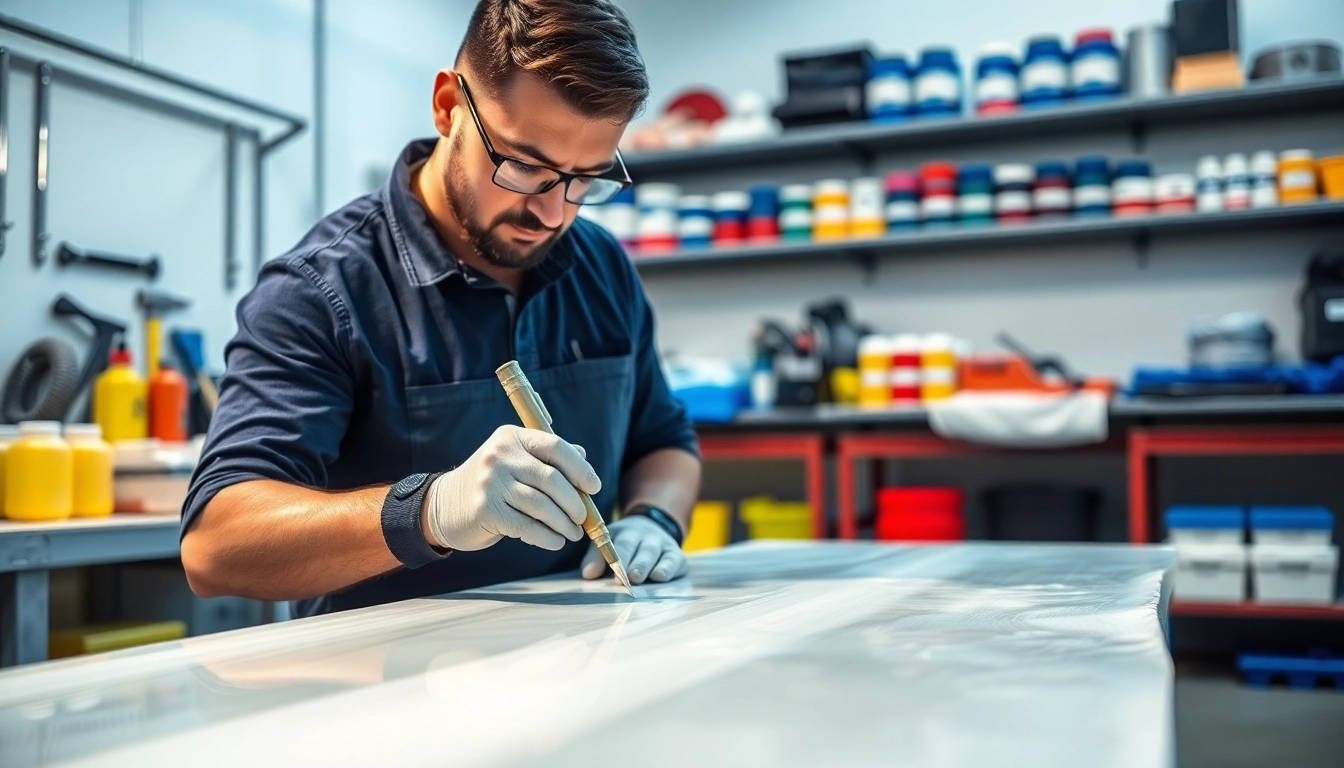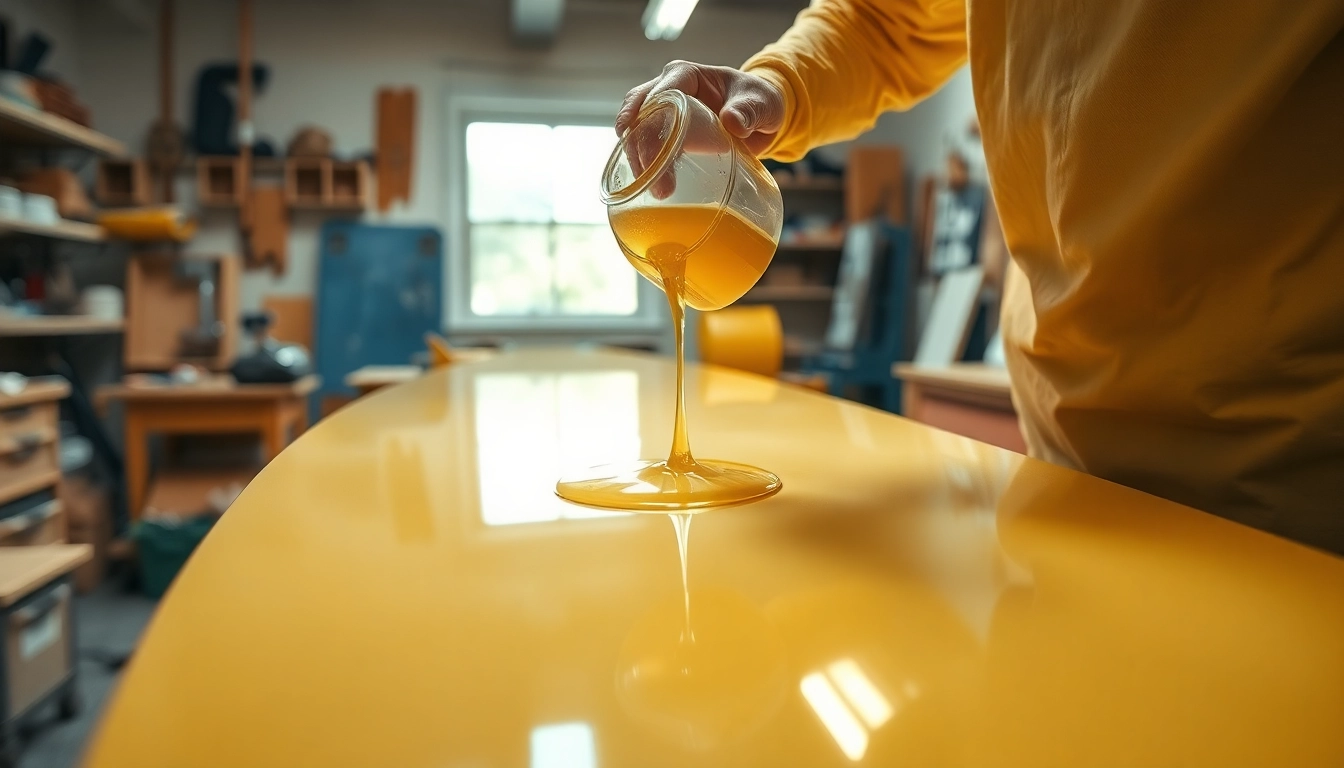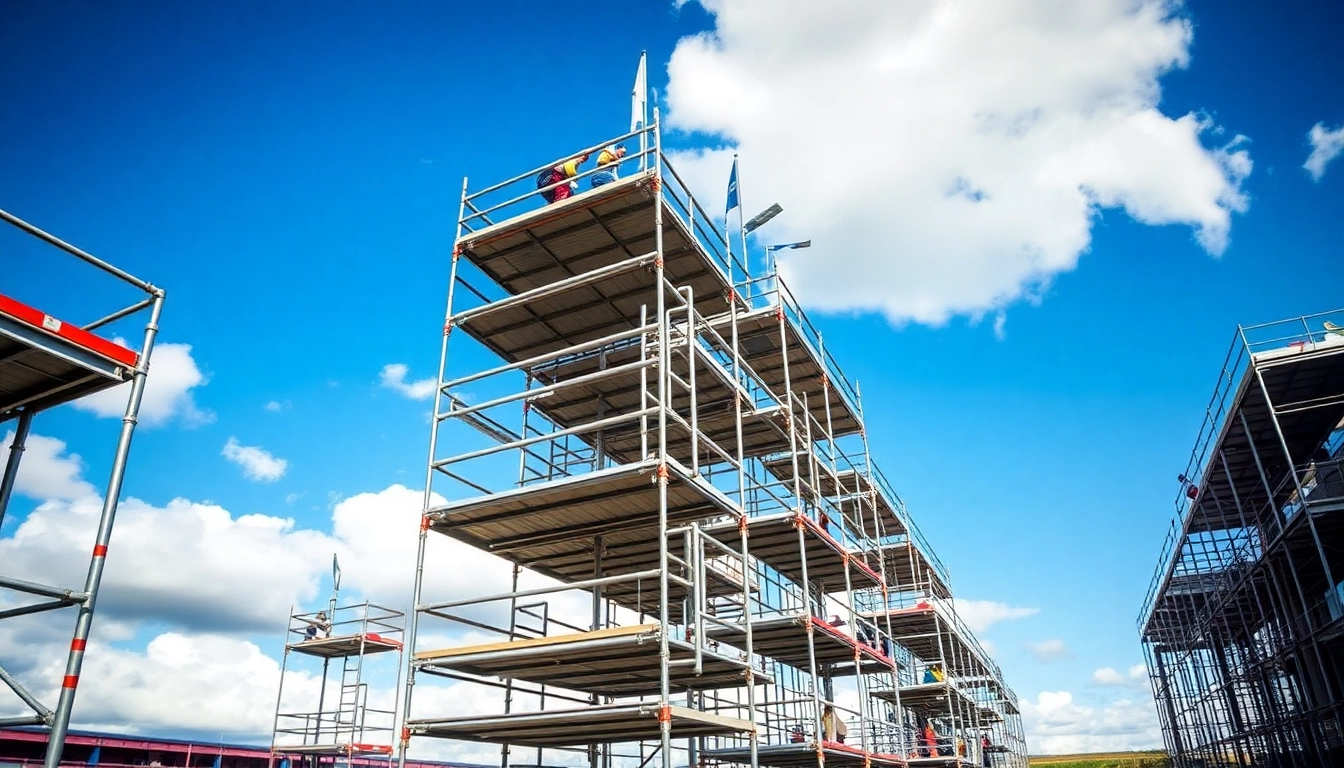Choosing the Right Laminating Resin: Comprehensive Guide and Applications
Understanding Laminating Resin: Definition and Purpose
Laminating resin is a crucial component in various industries, primarily used for bonding and reinforcing materials. This versatile resin enables layers of materials, typically fiberglass, to adhere securely to one another, creating robust structures essential for applications ranging from marine construction to automotive manufacturing. Understanding the role and function of laminating resin is vital for professionals looking to optimize their projects and achieve desired performance outcomes. For more detailed insights, explore information about laminating resin and its various applications.
What is Laminating Resin?
Laminating resin typically refers to a type of thermosetting resin used to bond multiple layers of materials, often including fiberglass cloth or reinforcement fabrics. It works through a chemical reaction that hardens the resin upon curing, resulting in a solid, rigid structure. The most common types of laminating resin are polyester and epoxy, each suited to specific needs and applications. Polyester laminating resins are known for their affordability and ease of use, while epoxy laminating resins offer enhanced performance in terms of strength, adhesion, and chemical resistance.
Applications of Laminating Resin in Various Industries
The versatility of laminating resin allows its use across diverse industries, including:
- Marine Industry: Laminating resin is critical in the construction of boats and other maritime vessels, providing durability and water resistance.
- Aerospace: Lightweight laminating resins are employed in aircraft components, helping reduce weight while maintaining structural integrity.
- Automotive: Used in manufacturing composite parts for vehicles, laminating resin contributes to better fuel efficiency through weight reduction.
- Construction: Laminating resin is used to create durable, high-strength structural elements in buildings and infrastructure.
- Sports Equipment: It is also found in various sporting goods, including surfboards and bicycles, enhancing performance and longevity.
Benefits of Using Laminating Resin
Using laminating resin comes with multiple benefits:
- Strength and Durability: Laminating resin can significantly enhance the strength of products, making them more resilient to environmental conditions.
- Versatility: It accommodates various materials, enabling applications across multiple sectors.
- Lightweight: Many laminating resins offer a lightweight solution, ideal for applications where weight is a critical factor.
- Cost-Effectiveness: Compared to other materials, laminating resin is often a cost-effective solution for bonding and reinforcing structures.
- Chemical Resistance: Epoxy laminating resins, in particular, provide excellent resistance to chemical exposure, prolonging the lifespan of structures.
Types of Laminating Resin: A Comparative Overview
Polyester Laminating Resin: Features and Uses
Polyester laminating resin is widely recognized for its affordability and ease of application, making it a popular choice in various industries, especially for hobbyists and small production runs. It cures quickly with a catalyst, making it suitable for rapid production processes. Its primary features include:
- Good adhesion to fiberglass and other substrates.
- Reactivity with a hardener, which allows control over the curing time.
- Low viscosity, making it easy to saturate composite materials.
Common applications include boat fabrication, model-making, and creates low-cost molds for composite manufacturing.
Epoxy Laminating Resin: Advantages and Applications
Epoxy laminating resin offers superior performance compared to polyester, making it the material of choice for demanding applications. It boasts exceptional adhesion qualities and provides stronger cured bonds, suitable for high-stress applications. Key advantages include:
- Higher tensile and compressive strength compared to polyester resins.
- Excellent resistance to moisture and environmental factors.
- Versatility in application, including coatings and encapsulations.
- Lower shrinkage rates leading to more uniform curing.
Due to these qualities, epoxy laminating resin is favored in aerospace, automotive, and marine applications where performance is critical.
Choosing Between Polyester and Epoxy Laminating Resin
When selecting between polyester and epoxy laminating resin, consider the following factors:
- Cost: Polyester is generally cheaper and suitable for budgets with tight constraints.
- Application Type: For projects requiring high strength and durability, epoxy is preferred.
- Curing Time: Polyester typically offers faster curing, advantageous in time-sensitive applications.
- Environmental Exposure: Epoxy provides better protection against moisture and chemicals.
Steps for Effective Laminating Resin Application
Preparing Surfaces for Laminating Resin
The success of laminating resin application largely hinges on effective surface preparation. Steps include:
- Clean the Surface: Remove any dust, debris, or grease to ensure optimal adhesion.
- Sand the Surface: Lightly sand any surfaces to create a rough texture, enhancing adhesion.
- Dry the Surface: Ensure all cleaned surfaces are completely dry before applying the resin.
Mixing and Using Laminating Resin
Proper mixing is crucial for achieving the desired chemical reaction between the resin and hardener:
- Measure Accurate Ratios: Follow the manufacturer’s instructions for the correct resin-to-hardener ratio.
- Mix Thoroughly: Stir the resin and hardener mixture for the recommended time to ensure uniformity.
- Apply Evenly: Use a brush or roller to apply the mixture evenly on prepared surfaces.
Post-Application Care and Techniques
Once the laminating resin is applied, careful attention must be paid to post-application practices:
- Curing Time: Allow sufficient curing time based on the manufacturer’s instructions.
- Temperature Control: Maintain recommended temperatures during the curing process to prevent issues like bubbling or improper curing.
- Inspection: After curing, inspect the bond for any defects or issues before further processing.
Common Challenges and Troubleshooting in Laminating Resin Usage
Identifying Common Issues with Laminating Resin
Working with laminating resin can pose challenges, including:
- Bubbles and Voids: Can occur due to improper mixing or curing at too low a temperature.
- Improper Curing: Insufficient time or incorrect hardener ratios can lead to a resin that never fully sets.
- Poor Adhesion: Often caused by inadequate surface preparation or contamination.
Solutions to Common Laminating Resin Problems
To overcome the challenges associated with laminating resin:
- Ensure thorough mixing and adhere to recommended ratios.
- Use a vacuum chamber to eliminate bubbles in the resin before application.
- Address surface preparation issues by cleaning and sanding adequately.
Tips for Achieving Optimal Results with Laminating Resin
To maximize the effectiveness of laminating resin:
- Work in a well-ventilated area to avoid inhaling harmful fumes.
- Consider using additives or fillers to enhance properties based on application needs.
- Keep all tools and materials organized for efficient workflow during application.
Future Trends in Laminating Resin Technology
Innovations in Laminating Resin Materials
The future of laminating resin technology points toward continuous innovation. Key trends include:
- Bio-Based Resins: Emphasis on environmentally friendly, sustainable resin alternatives gaining traction.
- Smart Resins: Incorporating technologies that provide feedback or adaptability under various conditions.
- High-Performance Resins: Development of resins designed for extreme applications, enhancing strength-to-weight ratios.
Market Trends and Demand for Laminating Resin
The market for laminating resin continues to grow due to rising demand across numerous sectors. Key influencing factors include:
- Increased demand for lightweight materials in automotive and aerospace industries.
- The rise of electric vehicles requiring advanced composite materials for battery housings and other components.
- Growing implementation of laminating resin in the construction of green buildings, focusing on sustainability and energy efficiency.
Environmental Considerations in Laminating Resin Production
Environmental concerns surrounding laminating resin production are leading to more stringent regulations and innovation:
- Efforts to reduce waste during production processes, enhancing resource efficiency.
- Development of recyclable and biodegradable laminating options to minimize environmental impact.
- Implementation of energy-efficient manufacturing processes to reduce carbon footprints.














Post Comment